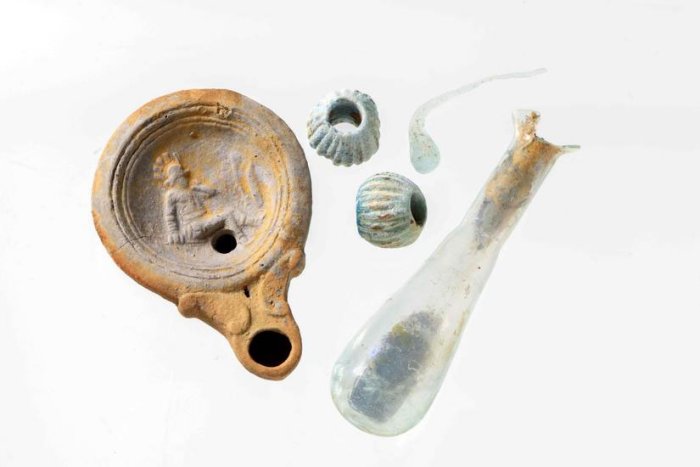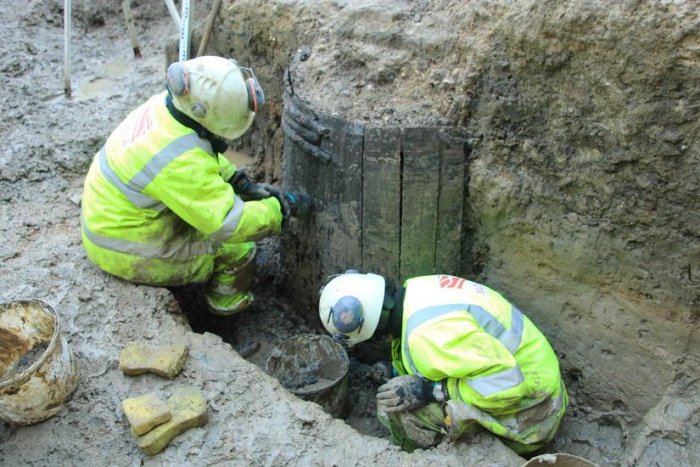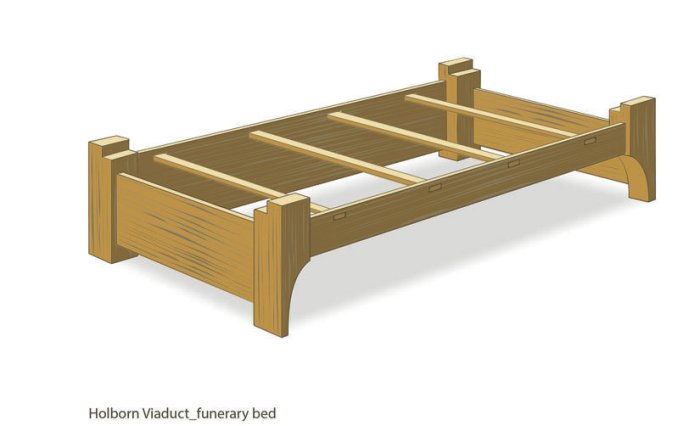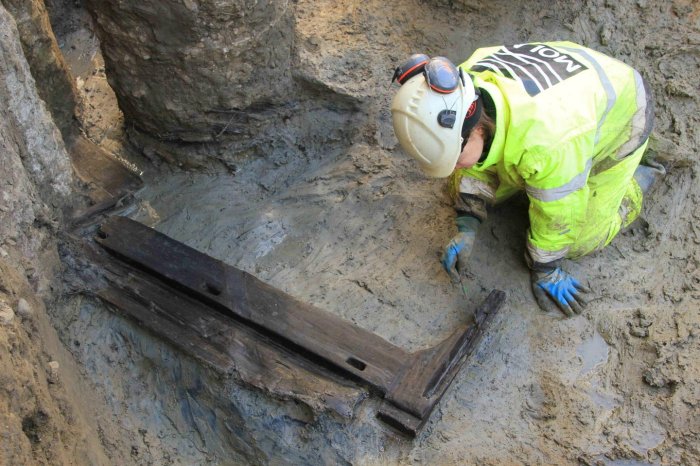Jan Bartek – AncientPages.com – During an excavation near the Holborn Viaduct in London, UK, archaeologists discovered a remarkably rare Roman funerary bed. This find, according to MOLA archaeologists, is the first complete funerary bed ever found in Britain.

Roman lamp, glᴀss vial and beads from a cremation burial. Credit: MOLA
The bed was crafted from high-quality oak with intricately carved feet and joints secured by small wooden pegs. It appears to have been disᴀssembled prior to its placement within the grave and may have served as a vehicle for transporting the deceased to their final resting place.
Researchers speculate that it was likely intended as a grave good for use in the afterlife. Tombstones from various locations within the Roman Empire often depict images of the departed reclining on similar couches.
This site, as indicated by the presence of a funerary bed, served as a burial ground during the Roman era (AD 43-410). Excavations revealed not only skeletal remains but also personal artifacts like a glᴀss vial and luxurious jewelry adorned with jet and amber beads.
A beautifully crafted lamp featuring an engraved image of a vanquished gladiator was also discovered. This design likely dates back to Britain’s early Roman period, around AD 48-80!

Archaeologists excavate one of the medieval timber wells. Credit: MOLA
“We know the Romans buried their ᴅᴇᴀᴅ alongside roads, outside of urban centers. So, it was no great surprise to discover burials at this site, which during the Roman period would have been located 170m west of the city walls and next to the major Roman road of Watling Street. However, the levels of preservation we’ve encountered – and particularly uncovering such a vast array of wooden finds – has really blown us away,” MOLA’s Project Officer Heather Knight said.

Reconstruction of the funerary bed. Credit: MOLA
Finding wooden artifacts at archaeological sites is unusual. However, thanks to the damp mud along the River Fleet, these items have been remarkably preserved. The site has unveiled not just a Roman funerary bed but also an array of intriguing wooden objects from its later years!

The funerary bed. Credit: MOLA
In addition to these findings, excavations revealed another cemetery on this site dating back to the 16th century. This could potentially be linked to the nearby St Sepulchre’s church. Following the Great Fire of London in 1666, this area underwent a transformation with new residential structures, commercial establishments, and even a pub being built – all of which were eventually replaced over time.
See also: More Archaeology News
Scientists will continue researching and analysing all these amazing finds. These studies will reveal many new details about the people who lived, worked, and were buried here over the past 2000 years.
Written by Jan Bartek – AncientPages.com Staff Writer





